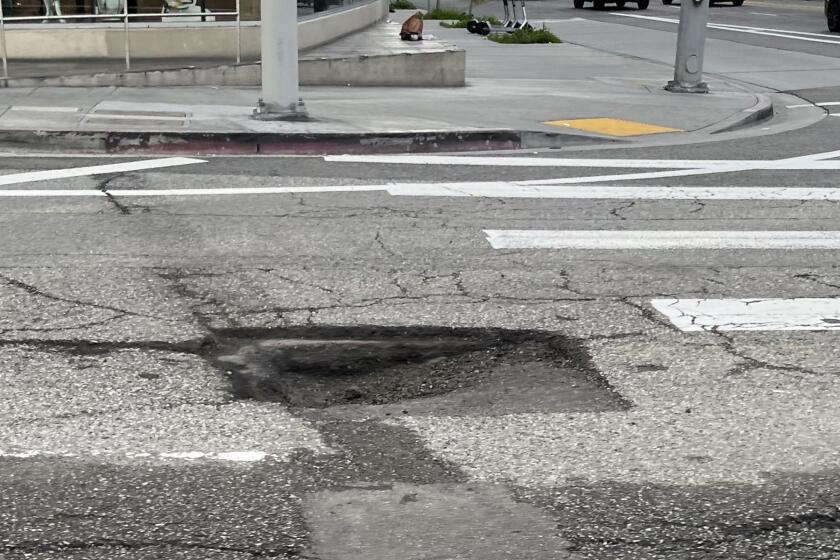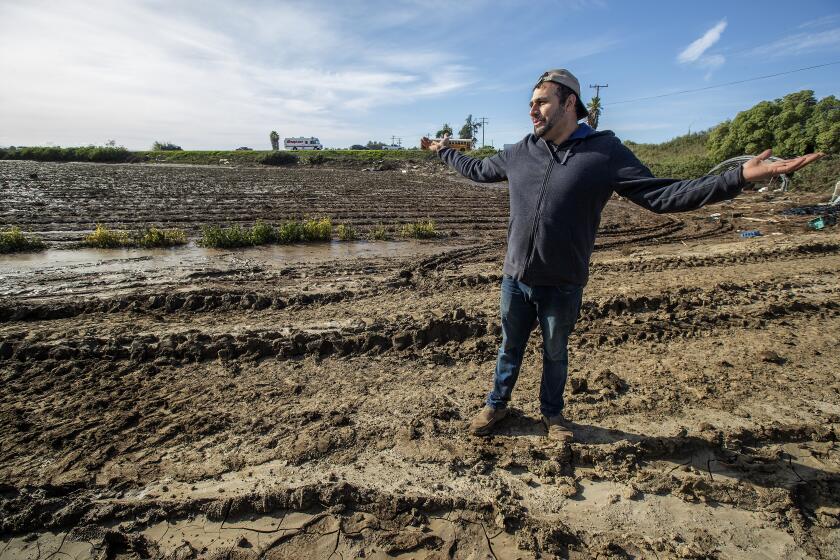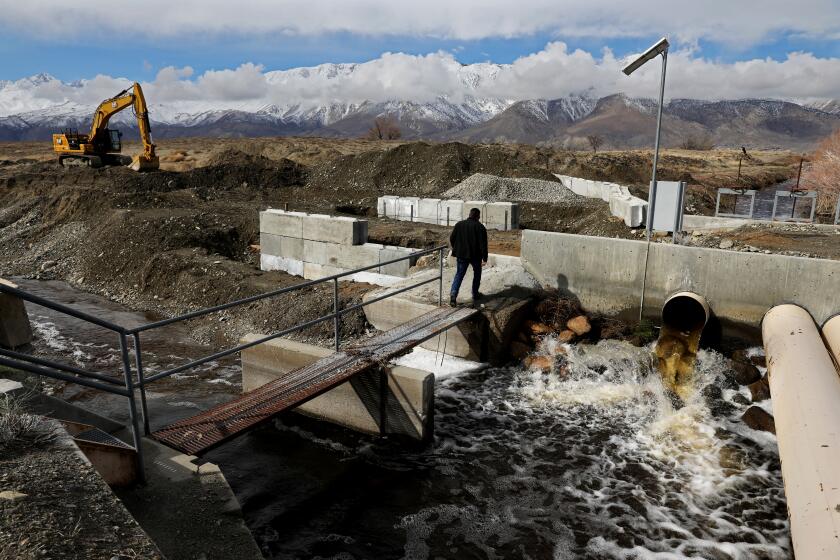More rain, more money: Here’s who is benefiting most from California storms
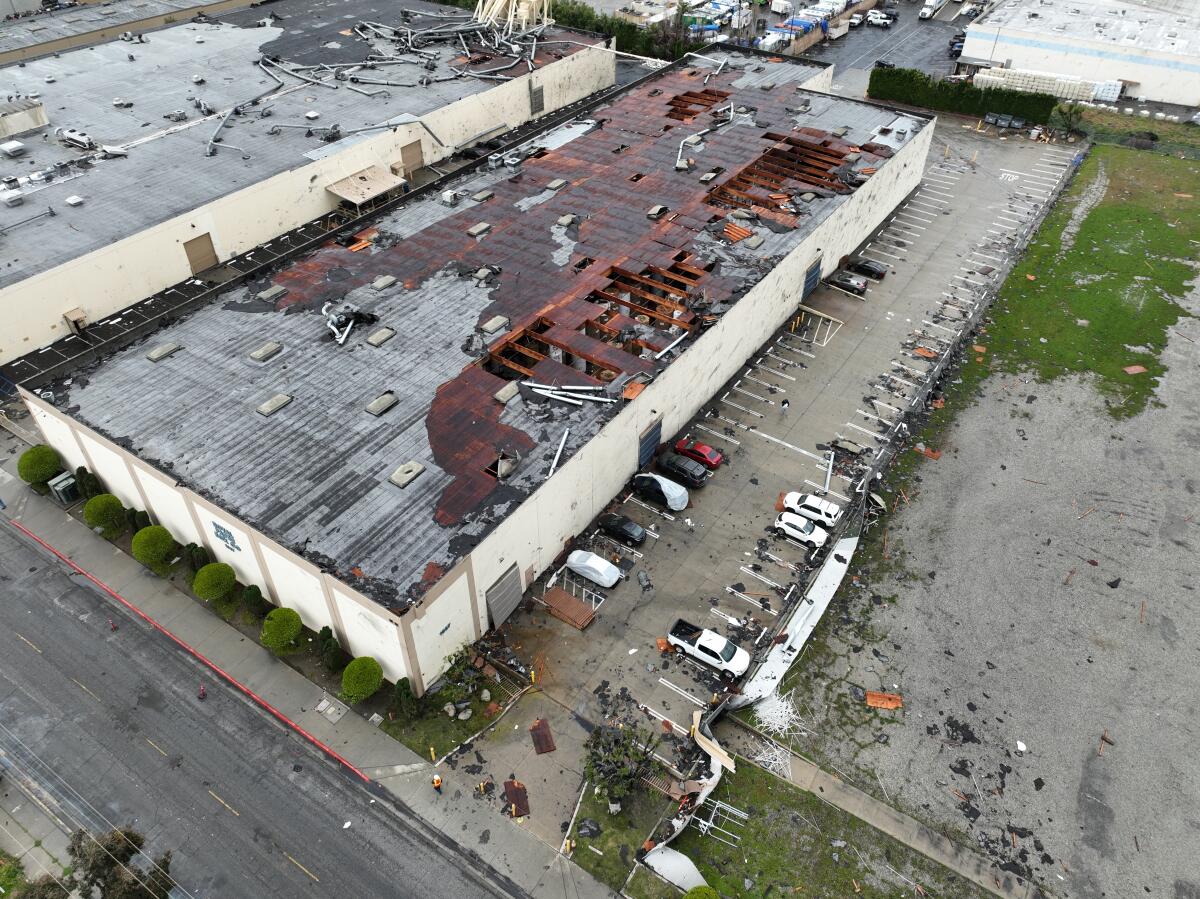
- Share via
Southern California’s seemingly endless parade of storms has been disastrous for some businesses: most infamously, Royal Paper Box Co. in Montebello, which lost its roof last week during a rare tornado.
With more rain forecast for Wednesday, businesses that operate outdoors or rely on in-person customers are bracing for another financial dry spell. That includes many restaurants and carwashes, where workers are struggling with sharply lower income.
For others, the storms can mean an operational boost. If you’ve tried to get a roofer to call you back lately, you know what we’re talking about. But delaying outdoor work for sunny days can eat into profits.
“Our small businesses are living climate-related risks acutely for the past four months,” said Kristen Jaconi, executive director of USC’s Peter Arkley Institute for Risk Management, which recently conducted a study with Deloitte that found large public companies are increasingly taking climate-related risk factors into account. “Especially in Southern California, we’re so unused to this significant amount of rain.”
Although climate experts are still studying whether recent storms are tied to global warming, such discussions seem remote to people who can’t work because of rain.
The entire dining area at Heritage Barbecue in San Juan Capistrano is outdoors — a boon during the pandemic that this winter turned into an impediment. Sales are down 50% this year from the same period in 2022, co-owner and pitmaster Daniel Castillo said.
“When it rains, people aren’t coming,” he said. “We cook overnight, while the rain is coming down, outside cooking through some of the worst rain we’ve ever had. Then the day comes, it’s still raining and we have to sit with all this food.”
Rain breeds potholes in aging roads around Southern California. You can file a claim for damage your car incurs, but reimbursement is not guaranteed.
The relentless storm cycle was brutal for much of the restaurant industry, leading to flooding, the closure of outdoor patios, last-minute cancellations, construction delays and service disruptions.
Several restaurants on Abbot Kinney Boulevard, including Felix and the Butcher’s Daughter, were forced to close March 21 when the power went out in Venice.
Mexican restaurant Loreto held its grand opening in Frogtown on Friday after its planned debut had to be pushed back by five months due to weather-related construction delays.
Sister restaurant LA Cha Cha Cha, typically one of downtown Los Angeles’ most coveted reservations for open-air dining, saw business plummet every time it rained, leaving its owners scrambling to make staffing adjustments and quickly move diners indoors.
The restaurant estimated a $500,000 loss in revenue this winter as a direct result of poor weather.
Harry’s Berries, a popular vendor at Southern California farmers markets, canceled its plans to sell at the Helen Albert Certified Farmers’ Market in West Hollywood on Monday because it didn’t have enough strawberries to harvest.
“Too much loss from the rain,” the Oxnard farm said on Instagram. “We are terribly sorry.”
It was the latest setback in a challenging winter for Harry’s Berries, which said in January that storms that month had destroyed strawberry beds and irrigation canals, and that extremely muddy conditions were making it difficult to enter the fields to do repair work.
After a series of violent storms, California farmworkers must cope with flooded homes, dangerous job conditions and lost wages.
Work has become so scarce at Southern California-area carwashes that an emergency relief fund originally set up to support laid-off workers at the start of the pandemic has been repurposed to help workers who haven’t gotten paid because of rain-related closures.
Already, 30 families have tapped the fund, said Andrea Gonzalez, organizing director of the Clean Carwash Worker Center in Los Angeles, which administers the fund.
“The rain has really put a financial burden on the carwash workers in L.A. County,” Gonzalez said. “They have been experiencing a really hard time being able to pay rent, provide food and assistance for their families.”
The center estimates that there are about 10,000 carwash workers in L.A. County, and carwash workers make just $18,000 to $20,000 a year, she said.
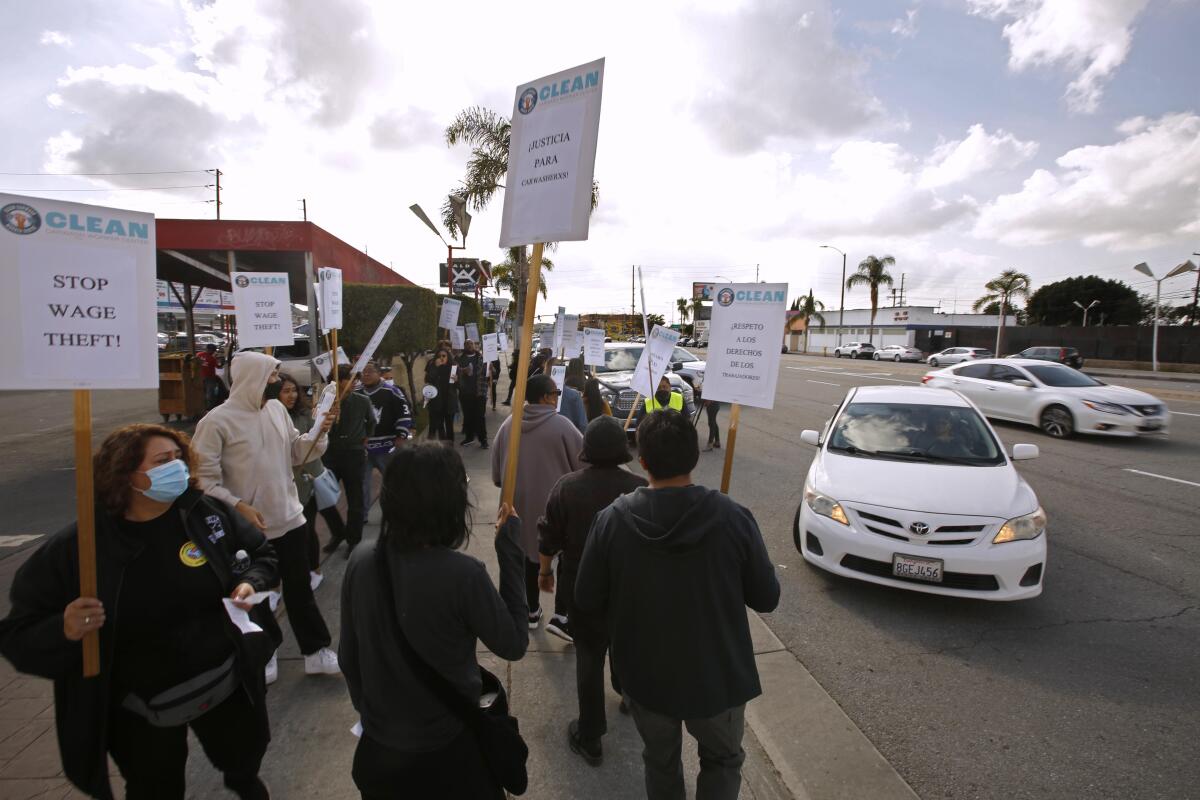
Since December, carwash workers have lost, on average, half of their usual pay due to the rains, Gonzalez said.
Many workers have had to find odd jobs, such as construction or day laborer work, to try to make up for the income they lost on rainy days. Some carwashes won’t open for business even if the weather is just gloomy, Gonzalez said.
“If the business doesn’t open for the day, they don’t get paid,” she said.
That takes an emotional toll on workers, who have come into the center’s offices in distress. And workers fear that with climate change, this kind of unpredictable weather will continue.
“Even though carwash workers often set up their own rainy day funds, it isn’t enough to help them get by, even in the usual rainy season,” Gonzalez said.
The Los Angeles Department of Water and Power is struggling to maintain the city’s Eastern Sierra aqueduct amid continued flooding from snowmelt.
At West Coast Arborists, “nonstop” emergency service calls — including more than 300 on the worst day — across the tree maintenance company’s service territory in California and Arizona means more business but not necessarily more profit.
“The amount of call-outs we’ve had over a three-month period of time is definitely kind of historical for us,” said Vice President Andrew Trotter, who has been with the company for 40 years. The Anaheim company has removed 2,000 trees since January, with 60% to 70% of its contracts in Southern California.
“You’ll see just tons and tons of uprooted trees, not just broken trees. That’s been unusual.”
However, the sheer volume of emergency service calls hasn’t necessarily translated into an economic boom for the nearly 1,200-employee company. Emergency calls sometimes crowd out routine service work, or the rains have occasionally made it unsafe for crews to operate, Trotter said.
“Economically, for our company, it’s a mixed bag,” he said. “At the end of the day, our daily income is almost the same as before the storms. It’s a give-and-take kind of thing.”
Rainy and windy weather has also kept the lawn maintenance and tree removal crew busy at Rose Hills Memorial Park in Whittier.
About 10 trees came down a month ago, and at that time, the lawns were so saturated that the cemetery closed for a day, said Antoinette Lou, a Rose Hills spokesperson. Since then, the cemetery preemptively removed 10 more trees that were more than 50 years old, she said.
Will the cemetery be prepared for this week’s rains?
“Removing some of the trees we’ve identified as potential hazards really has helped,” Lou said. “I think we’re OK there, as far as the trees go.”

When rain storms start, Leigh Jerrard’s company, Greywater Corps, starts getting calls about its rainwater collection systems.
“This year has definitely been more than in previous years,” he said.
Based in Glassell Park, Greywater Corps designs and installs systems for capturing rainwater — often from roofs — and reusing it in gardens. A 1,000-square-foot roof will catch about 600 gallons of water from an inch of rain, Jerrard said.
The company’s systems generally range from 500-gallon tanks to 5,000-gallon tanks and even as much as 10,000 gallons.
“All of these tanks are full right now and overflowing,” he said. “It’s been such an onslaught.”
Rainwater storage tanks typically run about $2 per gallon, but cheaper options such as reused shipping cubes called intermediate bulk containers can be found on Craigslist for about $150 and hold 275 gallons of water, Jerrard said. His company also holds workshops to teach people how to go the DIY route.
Although plastic tanks are cheaper, the sky is the limit on pricier options. A 5,000-gallon galvanized-steel tank would cost about $30,000, including parts and labor, Jerrard said. Underground storage tanks can cost about $10 per gallon and easily surpass $200,000 with the cost of excavation.
But the simplest and cheapest rainwater capture systems don’t even need a pricey storage tank, he said. A simple drainage pit will do.
“We try to keep rain out of the streets,” Jerrard said. “If you can keep it into the landscape and allow it to percolate back into the land, it’s a real win.”
More to Read
Inside the business of entertainment
The Wide Shot brings you news, analysis and insights on everything from streaming wars to production — and what it all means for the future.
You may occasionally receive promotional content from the Los Angeles Times.
